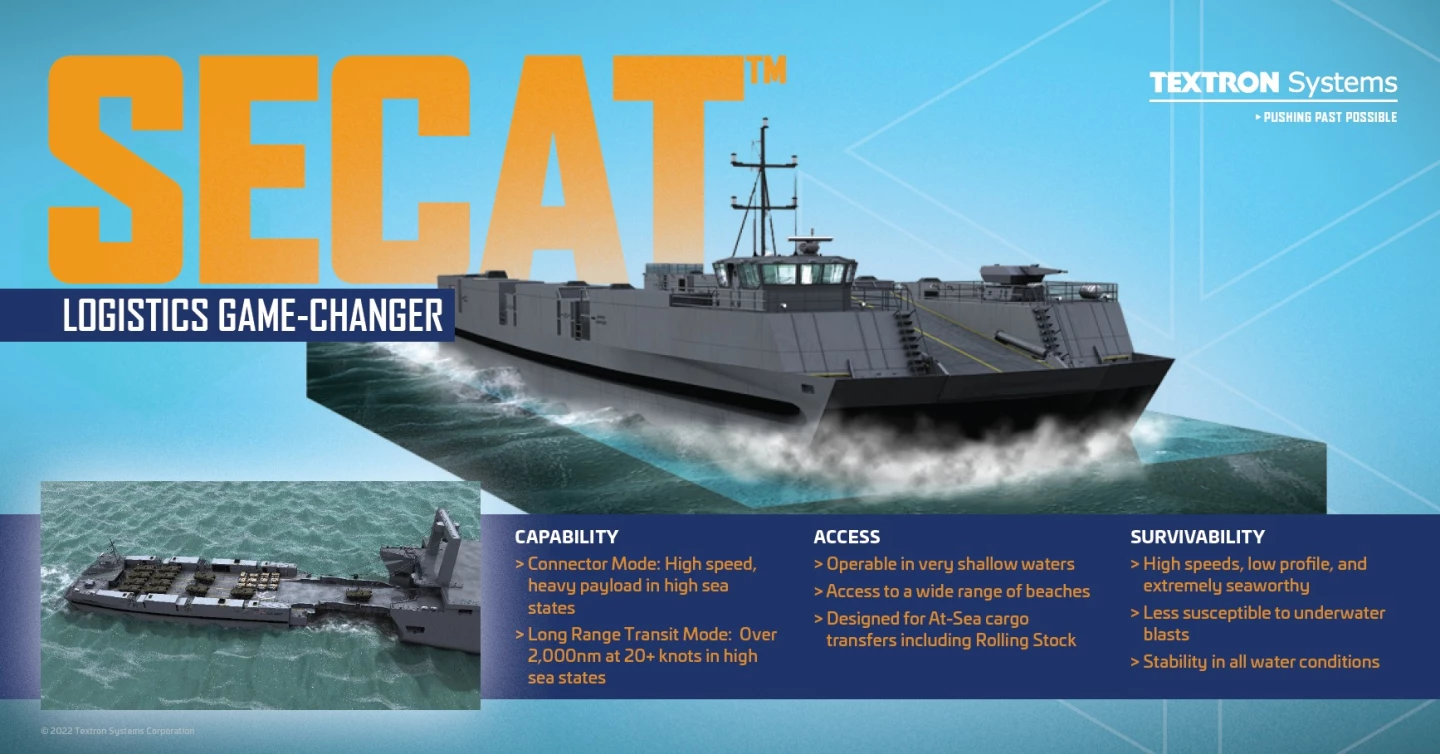Changes in the geopolitical situation are drastically altering how the major military powers are dealing with logistics. Since the Second World War, the main focus of Western planning has been in regards to a land war in Europe. This meant sorting out how to move soldiers and materiel around in a continental setting with plenty of port facilities.
Today, the hot spots have shifted to the Indopacific region and, to a lesser extent, the coastal areas around the Eastern Mediterranean and the Red Sea/Persian Gulf region. This means moving military assets to islands and undeveloped coastal areas – both of which may be in the hands of hostile forces.

To address this growing need, Textron Systems is developing its SECAT amphibious vehicle. At first glance, it looks like any other large landing ship, but appearances can be deceptive. In reality, the SECAT is an aluminum catamaran with a very neat high-speed trick up its sleeve.
The SECAT may be a ship, but it works on a similar principle as heavy-payload Ground Effect aircraft, which fly low, gaining extra lift and efficiency by trapping a cushion of air between their wings and the water surface.
Using Surface Effect Ship (SES) technology, SECAT has flexible bow and stern seals that can be configured to trap air between the two side hulls. This raises the craft nearly out of the water at speed, greatly reducing drag resistance to increase speed and efficiency.
The results are remarkable; it can carry the equivalent of 21 Advanced Reconnaissance Vehicles to an impressive range of 500 nm (575 miles, 926 km) in high seas at top speed or 2,000 nm (2,300 miles, 3,700 km) at 20 knots (23 mph, 37 km/h).
It can also maneuver at high speeds in very shallow waters. We're talking an extraordinary 4 feet (1.2 metres) of draft – it barely needs any water at all for a vessel this size – so it can land cargo on undeveloped shores without the need of piers, cranes, or other uploading equipment. It also has a rather formidable gun mounted on its bow in case anyone objects. In addition, the shallow draft also makes the SECAT less vulnerable to mines, submarines, or other hazards,
The SECAT has a "dry feet'' RoRo configuration. In other words, cargo and personnel can 'roll on and roll off.' This design also allows the craft to rendezvous at sea with not only naval assault ships, but conventional RoRo freighters. This allows the latter to remain well outside of the conflict area.
Source: Textron Systems






